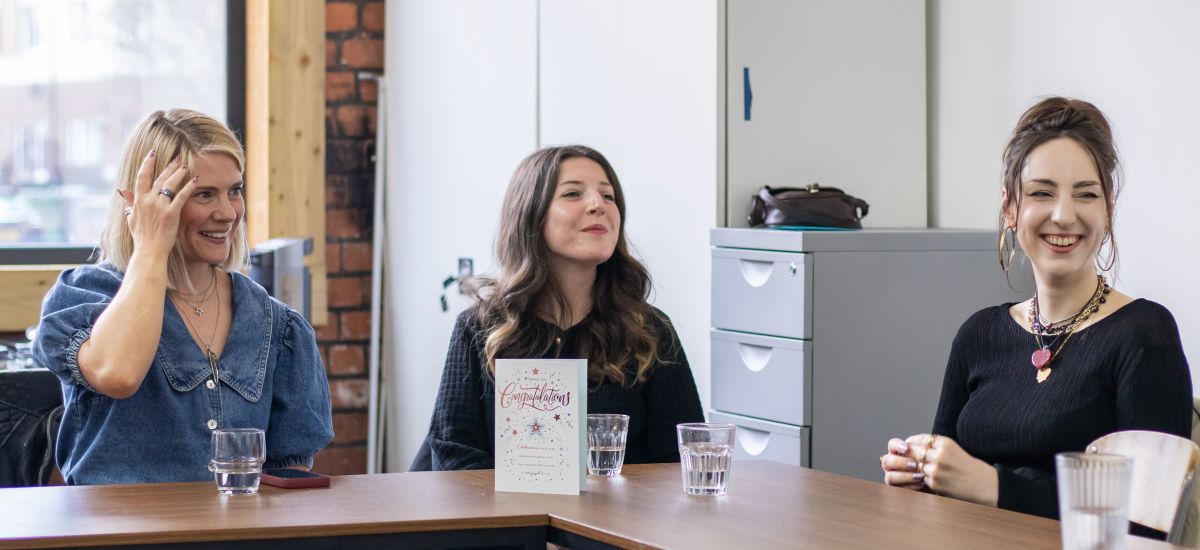Can Teaching Creativity Through Collaboratives Close the Gap for Tomorrow’s Innovators?

This is the last in the series of four articles on creativity in education in which we shall look at initiatives to introduce creativity into the curriculum and have a peek at what a creative school might look like, using some real-life examples.
Creativity Is Regarded As An Essential Skill Across A Wide Variety Of Domains
Evidence shows that teaching creativity confers personal, economic and social advantage. For future generations, success will be dependent on making an impact in a way that robots and AI can’t. The demand for creative thinkers is on the rise in the ‘professional world of adults’, but there are concerns over the lack of growth in creative thinking in children who are students at school today, which has resulted in a ‘creativity gap’. So, in the future of education, creativity must be a core capability.
Although AI has been considered to be a threat, it can also be a catalyst for innovative artistic expression as conventional notions of creativity and arts are being challenged.
So, in this article we ask the question: Can creative thinking be taught?
“Teachers Are The Problem” – But They Can Also Be The Solution
Many studies show that, overall, teachers do value creativity in education, they feel that creativity can be developed and enhanced and recognise the positive impact on their students. They also perceive the positive qualities which creativity can contribute to the classroom environment. Although many teachers understand the need for creativity in education, they also recognise that there are limitations on specific lessons on creativity, such as time constraints and the rigidity of the curriculum.
Historically, past research has suggested that teachers found creative behaviour undesirable in the classroom as typical characteristics of creative children include independence, impulsiveness, curiosity and nonconformity, attitudes which could be deemed to be disruptive and not beneficial for exam preparation.
This struggle to accommodate creativity isn’t just limited to the classroom but is a societal issue, as encapsulated in this quote from The Art Of Creative Rebellion:

“We live in a society that penalises highly creative individuals for their nonconformist autonomy. That makes the teaching of problem-solving discouraging and difficult.
There are lots of misconceptions about creativity in and out of the school, such as ‘some children are born creative’ and that creativity ‘can’t be assessed’, ‘is only for the gifted’, ‘cannot be taught’ amongst others. There are also lingering doubts that it is ‘synonymous with the arts’. Generally, from the research it seems that pedagogues don’t feel confident teaching a subject they have had little exposure to and feel it is stressful, suggesting that there are issues with training and accountability, which ‘drive instruction and curriculum’.
Barriers to teaching creativity are:

Also, generally, teachers are rewarded on performance in standardised testing. This is borne out by research which found that, when teachers were asked to rank a range of educational objectives, number one was ‘mastering content knowledge’ and the least important was ‘creative thinking’.
Traditional classroom environments have been criticised as not being ‘creativity-fostering places’, with pressure on the curriculum and lack of support from senior leadership. Academics Bergetto and Plucker sum it up in their belief that these issues ‘systematically eliminate’ creativity in the classroom.
How To Make Creative Classroom Environments
For the teaching of creativity to be effective, it seems that there must be a deliberate emphasis on the value of creativity in educational objectives. Teachers should be encouraged to prioritise and integrate creative thinking explicitly alongside traditional content knowledge and it is essential that schools are provided with ample support and resources, both from school leadership and educational institutions. This includes access to materials, professional development opportunities, and a collaborative environment that nurtures creative expression. Additionally, teachers should be afforded specialised training in techniques to cultivate creativity, equipping them with the skills and confidence needed to effectively guide students towards embracing their imaginative potential.
Basic Skills And Training Can Significantly Enhance Teaching Of Creativity
J.P. Guilford – The Divergent Thinker | Research on creativity has emphasised the importance of ‘divergent thinking’ – the ability to generate diverse and unconventional ideas ‘going in different directions’. This skill correlates with increased creativity in various aspects of life, demonstrating its significance in childhood development and it is predictive of adult creativity. Practical approaches include conducting divergent thinking sessions and promoting the use of metaphors, analogies, and stories. Additionally, established models like Rhodes‘ 4 Ps, Glaveanu‘s 5 As, and Kaufman and Berghetto‘s 4 Cs offer structured frameworks for teaching creativity. |
Not Really Teaching Creativity, But Letting It Foster
In order to cultivate creativity in education, it is imperative that teachers are afforded time allocated within the curriculum to allow for creative exploration and to establish a safe environment that promotes self-expression and imaginative thinking without a feeling of being rushed or constrained. This way, students can delve deeper into their interests and autonomy is empowered by providing feedback when they get things wrong, which encourages independence and dispels myths about creativity by emphasising its broad applicability beyond traditional artistic pursuits.
The Development Of Creativity Needs To Start Early Through Play

Childhood and adolescence are informative times for the development of creative processes in individuals which sets them up for an adulthood embracing creativity, helping increase career options, problem-solving in daily life and following enjoyable pursuits.
Employers in job postings nowadays list creativity as a necessary skill. For match applicants to match this requirement, younger generations may need retraining to think differently. However, to some extent, they’ve already been hard-wired, we really need to start the process when children are young. This is exactly what we are seeing at Kloodle as schools are engaging in skills’ awareness at earlier stages.
| UNICEF believes that children should learn about creativity through play, particularly in pre-primary education. They advocate for a ‘hands-on learning approach’, emphasising the importance of imaginative and interactive activities in a child’s early development. Through pretend play, children can explore their creativity, build imagination, express themselves, and build crucial cognitive and social skills, which, when developed, are transferable later in life and predictive of creativity over time. Educators can encourage pretend play in young children by providing appropriate toys, guidance, encouragement, time and space for play. This approach aligns with UNICEF’s broader mission to support ‘holistic child development’ and provide young learners with the tools they need to thrive in various aspects of life. |  |
In early childhood, free play is linked to heightened levels of creativity, particularly in pre-schoolers engaged in role-playing and character enactment, leading to improved analytical skills for considering different perspectives. This occurs before the influence of logic and convention, often observed during the ‘fourth grade slump’ in adolescence. The Elementary Education stage is regarded as a crucial period, a transitional phase between spontaneous childhood creativity and more purposeful and complex adult creativity; older children tend to demonstrate greater creativity due to accumulated experiences, knowledge, and diverse interests. Play serves as a foundation for cultivating essential social and emotional skills; teaching children how to connect with others, share, negotiate, resolve conflicts, and develop leadership and group-oriented competencies. Additionally, play aids in building resilience and coping mechanisms, allowing children to navigate relationships, address social challenges, and overcome fears, often through the imaginative re-enactment of heroic scenarios.
Overall, play fulfils a fundamental human need for expressing imagination, curiosity, and creativity, all of which are vital assets in our knowledge-driven society.
Creativity Initiatives
Many educators and researchers argue that creativity is crucial for preparing students to navigate an increasingly complex and rapidly changing world and there are calls for education reform, a shift away from rigid testing and toward a more holistic and creative approach to learning.
What Are They Doing In The International Arena?
Teaching for creativity is growing as a global phenomenon. The OECD has developed a ‘portfolio of rubrics’ and a range of resources to support teachers and students, designed to clarify ‘what sub-skills should be developed’ regarding creativity and critical thinking. Leading countries in this field, such as Finland, Australia, Singapore, Ireland and Canada, are evolving creativity-focused education systems to future-proof their prosperity with teaching which is ‘student-centred’, encourages exploration and experimentation and involves thinking ‘outside the box’.
Here are a few examples of excellent initiatives which aim to prepare students for a future where creativity and innovation are increasingly valued:

The shift in perspective has led to a number of general educational initiatives around the globe designed to promote creativity:
- Project-Based Learning: Encouraging students to work on open-ended projects that require creative problem-solving. The EPQ is a qualification in the UK designed on these lines,
- Innovation Centres: Research has concluded that, generally, traditional classroom environments are not ‘creativity-fostering places’, therefore, an area in the school can be assigned as a place where students can experiment, tinker, and collaborate on creative projects.
Some Initiatives In The UK
School Citizen Assemblies
An initiative already in operation is the School Citizen Assemblies (SCAs), in which schools act as ‘hubs for change’ via gatherings or teams of students within a school community focused on fostering a positive sense of civic responsibility, moral values, and active citizenship.

SCAs are designed to empower young people to approach complex challenges and implement transformative change through discussions, presentations, and effective problem-solving, using relevant materials and accessing experts and networks of stakeholders. For example, there might be a topic like dealing with recycling waste and, with the input from a range of experts on a topic and reviewing press coverage and technical papers, the pupils can develop innovative ideas to deal with the challenges.
 | In the words of Charles Darwin: “It is the long history of humankind (and animal kind, too) that those who learned to collaborate and improvise most effectively have prevailed.” |
Creativity Collaboratives
Durham Commission on Creativity and Education suggested one of the most plausible solutions to teach creativity through developing a network of ‘Creativity Collaboratives’, which have the objective of supporting creativity throughout the school curriculum. This is in line with the view of Ken Robinson who promoted: “collaborating and benefiting from diversity rather than promoting homogeneity.”
On the back of Durham Commission recommendations, the Arts Council has launched a network of eight Creativity Collaboratives across the country to make creativity “a bigger part of young people’s lives in education and beyond” and with the objective to “embed creativity and creative thinking in schools across the UK.” The idea is to engage in opportunities for creative learning, supported by subject knowledge and understanding, so that the creative capacity of students can be nurtured, and their personal, social and academic development greatly enriched. This commitment might go some way to close the huge disparity in teaching and cultivating creativity between state and better-resourced independent schools, which often reflects socioeconomic factors.
These collaboratives should be led by teachers and should operate in a similar way to the already established ‘maths hubs’. This way, teaching creativity will be practised across the curriculum and the whole school system in all domains and phases, and not confined just to certain subjects such as the arts. Although different, creativity in science and drama are equally valuable and effective.
Teaching creativity, done well, will promote students’ opportunities for creative learning and creative thinking:

The Durham Commission concludes that “creative thinking ought to run through all of school life infused in the way human and natural sciences are learned and not just reserved for the traditional arts such as music art and drama”.
This infusion is exactly the way in which Kloodle is used for the Skills for Life and character education programmes, where participating schools often use the mantras ‘everywhere, not anywhere’ and ‘lived not laminated’.
The Development Of Creative Skills On Kloodle
Kloodle, the digital skills platform, offers a framework for the development and awareness of skills for young people.
So, how can an educational establishment make this happen in practice using Kloodle?
Engaging in creative activities bolsters students’ confidence, motivating them to take risks, explore new concepts, and persist in their endeavours. The school identifies the key skills which relate to this process, such as teamwork, problem-solving, critical thinking and resilience, to name but a few, and, for the students, these skills can be caught from interactions in the students’ community, taught through their creative educational experiences reinforced with reflections, and sought by managing their own creative development.
This way young people can enter society and the world of employment confident that they are enabled to think and work creatively across many disciplines and sectors.
Examples Of Schools Embracing Creativity
There are a number of schools throughout the country which have adopted a creative outlook in the curriculum and everything they do. Here is a summary of a few trailblazers:

What are these schools doing which schools typically aren’t? Well, key things to pick out are that they are not rigorously following the curriculum but have their own way of doing things, they are not designed in the traditional school setting format, but have designated creative ‘makerspaces’, appropriate for the tasks. There is a focus on skills, character and holistic development of the child.
It Is Summed Up By John Cleese: “Creativity Is Not A Talent. It Is A Way Of Operating.”
Over this series of articles, we have seen how creative pursuits are really important in life, as they contribute to mental well-being and foster cognitive growth. Also, AI is devouring jobs and redefining which skills are required for employment, so, future employers will want people with key ‘human’ skills and emotions which AI can’t replicate; and so, in order to stay ahead it will be crucial to cultivate essential human abilities linked to emotional intelligence, in particular, creative thinking. In the words of the mathematician, Marcus Du Savoy: “we have this extraordinary ability to imagine and innovate and to create works of art that elevate, expand and transform what it means to be human.”
Creativity must become a core capability on the curriculum in education and, with this in mind, it has fought its way up the agenda internationally with exciting initiatives, like collaboratives, problem-based learning, school citizen assemblies and creativity thermometers, through which ‘best practice’ will evolve and become established.
Through concerted efforts, education can become a catalyst for the creative thinkers, storytellers and visionaries of tomorrow. It is widely accepted that creativity can be fostered rather than hard-taught and the process should begin at an early stage, even in pre-school, with play, pretend play and exploration.
Teachers play a pivotal role in nuturing creativity among young learners, but need the time, the right tools, emphasis and environment to succeed and, to achieve this, reform of the education system is required. The laser focus of this reform needs to be on the key skills which young people will require to thrive in the future, in life and at work, the main one being creativity.
We started this series with how words have the power to stir emotions in us humans and the World Economic Forum’s statement: “creativity is a uniquely human trait that no algorithm can replace”. So, it seems appropriate to finish with the power of words, this time ones accompanied by another great medium of creativity, music. In the words of Daft Punk:
 | “We’ve come too far, To give up who we are, So let’s raise the bar And our cups to the stars” |
By Neil Wolstenholme, Chairman of Kloodle











Responses